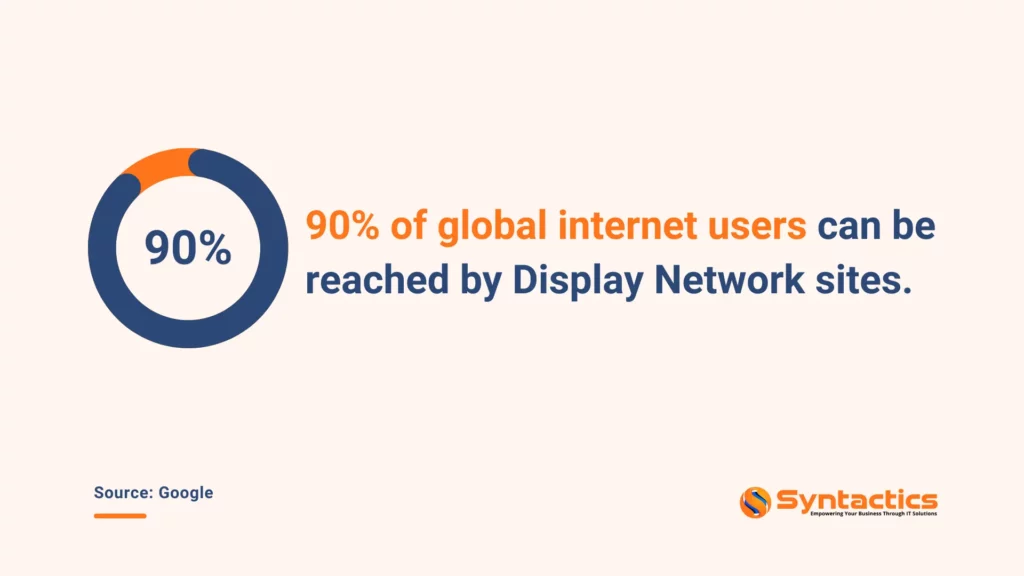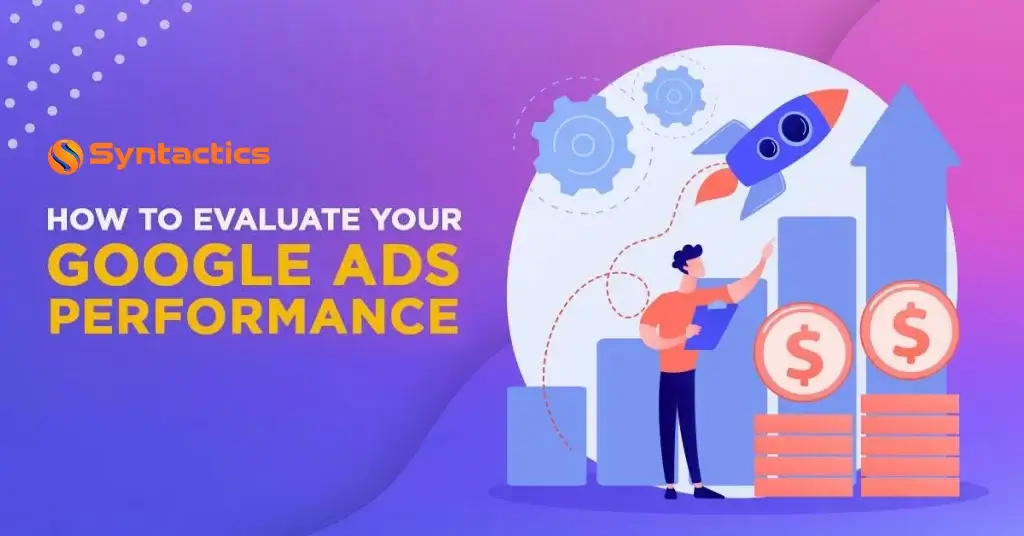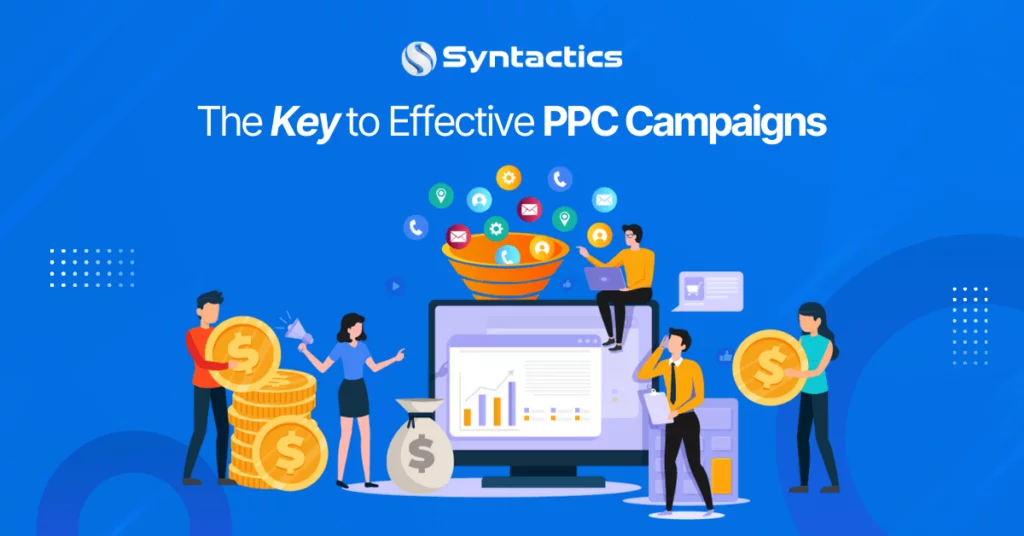
Achieve Higher Conversions with Google Display Ads
Google Display Ads offers businesses numerous opportunities to amplify marketing strategies and achieve increased levels of conversions. In fact, businesses can reach target audiences and create compelling ad experiences that lead to measurable results by following the best display ad practices.

Source: Google.
The Role of Google Display Ads in Driving Conversions
Display Ads allow advertisers to reach Google users earlier in the buyer’s journey, nurturing interest and building trust. Ads with targeted strategies and well-designed visuals can improve conversion rates, making them a critical component of effective Pay-Per-Click (PPC) management.
One of the key factors contributing to campaign success is the versatility of display ad sizes and formats. Businesses can tailor their strategy to match audience preferences and behaviors, ensuring that their ads stand out.
Below are the different types of display ads based on their sizes and format, with recommendations on their intended audiences and purposes.
Google Display Ad Sizes, Formats and their Objectives
Each size and format is suited to specific goals, platforms, and audience behaviors. Selecting the right display ad can significantly impact the effectiveness of your marketing campaign.
Here’s a breakdown of the available options:
Banner Ads
This type of display ad has two common sizes and formats — leaderboard (728×90) and standard banner (468×60).
Best Uses:
Standard banner ads are ideal for businesses aiming to achieve high visibility on web pages, especially since this type can be found at the top of the screen.
But, the leaderboard format works well for industries like technology and eCommerce, or websites where audiences are likely to engage with bold and visually prominent ads.
Moreover, banner display ads are best for displaying concise messaging in high-traffic webpage areas. Examples include limited offers or special announcements.
Square and Rectangular Ads
These ads are versatile and fit seamlessly into content-heavy websites, such as blogs or online news publications. Such ads are best for displaying visually rich creatives or product imagery that requires a compact but impactful space.
Common sizes include the following:
- Medium Rectangle (300×250);
- Large Rectangle (336×280);
- Square (250×250), and
- Small Square (200×200).
Best Uses:
Medium and large rectangle ads are the most effective for businesses targeting mobile and desktop users. These types of ads are excellent for retargeting campaigns to re-engage users who have previously interacted with the brand.
Skyscraper Ads
There are two different sizes and formats of skyscraper ads — standard skyscraper (120×600) and wide skyscraper (160×600). With their detailed messaging, both are best for promoting multiple features of products or services, or highlighting key benefits over time as the user navigates the page.
Best Uses:
Skyscraper ads work best for maintaining a consistent presence on the sidebars of web pages, especially for finance, real estate, and Software as a Service (SaaS) industries. Their vertical orientation ensures they remain visible as users scroll.
Responsive Display Ads
These types of ad formats have unique features. Advertisers can automatically adjust the size, format, and appearance to fit different placements within the Google Display Network.
Best Uses:
Responsive display ads work particularly well for testing campaigns across various devices and websites. Businesses of all sizes can leverage responsive ads because they’re perfect for those looking to maximize reach and efficiency without manually creating multiple ad versions.
A PPC management services expert can broaden ad placement opportunities while maintaining a cohesive brand look.
Rich Media Ads
This ad format is best for brands with high budgets and a focus on storytelling or deep audience engagement. Business advertisers can showcase high-end products or services where user interaction and brand immersion are critical.
Best Uses:
Industries like fashion, entertainment, or automotive can effectively use rich media ads to captivate users with dynamic and interactive experiences. Examples are expandable banners, and interactive content.
In-App Display Ads
In-app display ads integrate seamlessly into the app experience, making them less intrusive while maintaining high visibility. Examples of in-app display ads are full-screen interstitial ads and banner ads integrated into app interfaces.
Best Uses:
This ad format is suitable for mobile-first businesses, app developers, or companies targeting younger demographics who spend significant time on mobile applications. Additionally, this is best for promoting app downloads, subscriptions, or mobile-specific offers.
Check out this blog on how to create enticing ads:
Display Ad Best Practices to Improve Conversions
Making the most of Google Display Ads is crucial for reaching your target audience effectively. By following these best practices, businesses can ensure that their campaigns are optimized, messages are clear, and the results are outstanding.
1. Separate Search and Display Networks for Better Campaign Results
The Search and Display Networks cater to different user behaviors. Users on the Search Network are actively seeking information or services, while those on the Display Network are often browsing or consuming content.
Therefore, it’s important to separate these networks into individual campaigns. PPC advertisers can tailor their strategies to match user intent, allocate the budget effectively, and optimize performance.
2. Open Remarketing Campaigns with Audience Segmentation
Different user intents can exist even within the same ad network. For instance, individuals already familiar with your brand, such as those who visited your website or watched a Facebook reel, have distinct needs compared to new audiences.
Tailoring these ad messages accordingly can make a significant impact. In this scenario, audience segmentation plays a key role in differentiating between remarketing and general awareness campaigns. It prevents audience overlap while allowing PPC specialists to adjust ad strategies.
However, separating remarketing and individual campaigns depends on budget allocation and campaign goals. But, a PPC expert can help businesses to customize these campaigns further and target specific objectives effectively.
3. Monitor Ad Frequency
Frequency refers to the average number of times a user sees your ad. Monitoring and optimizing frequency ensures that people aren’t overexposed to your advertisements, which can lead to ad fatigue and decreased performance.
Now, Google Ads offers tools to track how often users see those ads and their unique reach. This powerful tool can monitor metrics, such as Click-Through Rates (CTRs), conversions, and other Key Performance Indicators (KPIs) to detect patterns as ad frequency increases.
To optimize, consider adjusting frequency capping in Display Network campaigns by expanding the “Additional Settings” section. Businesses can set limits at the ad, ad group, or campaign level by day, week, or month.
But, remember, there’s no one-size-fits-all frequency cap. Working with an experienced PPC management team can make it easier to find the sweet spot for engagement.
4. Understand Placement Options
Google Display Network offers a wide range of placement options, including websites, apps, and YouTube videos. That’s why targeting methods such as incorporating specific keywords or topics result in automatic placements is a critical approach.
For more control, advertisers can use managed placements to select specific locations, even though Google may still place ads on equivalent apps.
For those focusing on relevance, leverage the placement report to expand reach. Overall, using data-driven insights can help refine and maximize ad performance.
5. Align Call-To-Action (CTA) for Maximum Engagement
Display Network campaigns often use in-market and affinity audiences for targeting. To identify the most effective audience, it’s crucial to check the Audience Manager in Google Ads or use Interests Report in Google Analytics to analyze current site visitors.
Hence, it’s vital to use clear, compelling CTAs that are aligned with the user’s stage in the buying journey. Whether it’s encouraging users to learn more, sign up, or make a purchase, ensure that the CTA resonates with the user’s intent and drives the desired action. But, testing different CTAs can help businesses and marketers identify the best fit for each audience.
6. Use Specific and Negative Keywords
Focusing on precise terms that align closely with the audience’s search intent ensures ads are seen by the right people. This targeted approach increases relevance, enhances engagement, and drives higher Click-Through Rates.
Using negative keywords, on the other hand, help refine your audience further by excluding irrelevant searches. Filtering out terms that don’t align with the goals can help businesses avoid wasted ad spend and ensure every click is valuable.
Together, these strategies maximize the ad’s impact and achieve higher conversions.
7. Boost Ad Performance with Transparent Pricing
Another effective way to attract potential customers is to include prices in ad texts as an experiment. Customers who clicked the ads are more likely interested in purchasing a product or service at that price, especially if your price is lower than competitors.
To test its effectiveness, employ A/B testing method, compare Click-Through Rates and conversion rates between ads with and without prices to determine its impact.
Learn more about evaluating your Google Ads performance here:
Key Metrics to Evaluate Display Ad Campaigns
Measuring your Google Display Ad campaigns is crucial for optimizing performance, enabling you to hit your marketing goals easily. By focusing on essential metrics, businesses can get insights and refine their approaches for better results. Below are the key metrics to watch when running display ads:
Click-Through Rate (CTR)
CTR benchmarks vary by industry but are around 0.35% to 0.65% for display ads. A low CTR means the ad isn’t resonating with the target audience.
To improve CTR, consider using attention-grabbing headlines and images and optimize CTA phrases. It’s also ideal to target specific audience segments with tailored messaging.
Conversion Rate (CVR)
CVR is the percentage of people who complete a desired action, such as filling out a form or buying a product, after they click your ad. It’s the key to seeing how well those ads are driving actions that match the campaign goals.
Key factors affecting CVR include:
- Landing page quality and relevance;
- Audience targeting, and
- Ad-to-landing page alignment.
Cost Per Click (CPC)
Monitoring CPC is vital for those who have a limited budget or resources. A high CPC means there’s high audience competition.
Collaborating with a reliable PPC campaign management services agency can help businesses target less competitive audience segments. They can also utilize bidding strategies like Target CPA (Cost Per Acquisition) or Maximize Clicks to control costs.
Impressions and Impression Share
These metrics show how well the campaign is reaching the targeted audience. A low impression share means it may not have enough budget or poor ad quality.
Return on Investment (ROI)
ROI is the ultimate measure of a campaign’s success, whether these ads are adding to your bottom line.
PRO TIPS:
- Allocate budget to top performing campaigns.
- Focus on audience segments with higher conversion value.
- Review and optimize creative and placement regularly.
Viewability Rate
Google defines an ad as “viewable” when 50% of it is visible on the screen for at least one second.
Also, high viewability means your ads have a chance to get seen by your audience.
It’s critical to optimize for above-the-fold placement and avoid low-quality or irrelevant sites.
Engagement Rate
Engagement rate is calculated as the percentage of users who interacted with your ad relative to the number of impressions it receives. Interactions can include clicks, hover-overs, or other predefined engagement actions.
A high engagement rate suggests that this ad resonates with your target audience. It also reflects the appeal and relevance of the ad design or message. Thus, it helps businesses and marketers to identify underperforming ads for testing or improvement.
An experienced PPC management team can help your advertising campaigns identify and improve its engagement rate by following these strategies:
- Enhance ad creatives;
- Optimize placement;
- Aligning content with ad copy;
- A/B testing, and
- Refine landing pages.
Engagement Metrics for Rich Media Ads
For display ads, especially for interactive and rich media formats, consider monitoring the following:
- Percentage of users who viewed the entire ad.
- Percentage of users who interacted with ad elements.
These metrics are crucial for brand awareness or engagement campaigns.
Quality Score
This metric measures the relevance and quality of your ads, keywords, and landing pages. A higher Quality Score means lower CPC and better ad placement.
For better engagement, improve performance by using keywords in ad copy, matching landing page content with ad copy, and refining ad creatives.
Find out more about the key to effective ad campaigns here:
Fill the Top of Your Funnel with Effective Display Ad Strategies
In conclusion, effective display ad strategies attract a broader audience and achieve quality conversions. Similar to any PPC campaigns we run, we perform continuous testing in our Display Network Campaigns to improve performance even better and gain more wins.
While it’s true that each account may be different, these display ads best practices can help fill the top of your funnel:
- Separate Search and Display Networks for Better Campaign Results
- Open Remarketing Campaigns with Audience Segmentation
- Monitor Ad Frequency
- Understand Placement Options
- Align Call-To-Action (CTA) for Maximum Engagement
- Use Specific and Negative Keywords
- Boost Ad Performance with Transparent Pricing
Frequently Asked Questions About Display Ads
How do Display Ads differ from Search Ads?
Display Ads appear across the Google Display Network, targeting users as they browse websites, watch videos, or use mobile apps. These ads focus on generating awareness and interest while Search Ads target users actively searching for specific products or services, capturing immediate intent.
Can small businesses benefit from Google Display Ads?
Yes, small businesses can significantly benefit from Google Display Ads by using affordable targeting options like geographic targeting, remarketing, and responsive display ads. These allow businesses to reach local audiences or re-engage users who have shown interest in their products or services.
What is the recommended budget for a Google Display Ad campaign?
There’s no one-size-fits-all budget for Google Display Ads because it depends on campaign goals, industry competition, and audience size. Consider starting with a test budget to analyze performance metrics, then scale based on Return-On-Investment (ROI). Setting a daily budget ensures spending aligns with business constraints.



















Comment 0